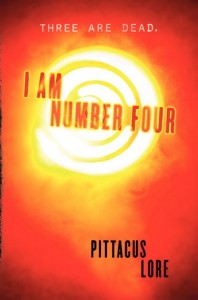My title is editor, but I’m not the kind of editor most people think of when they hear the word. Unlike editors at publishing companies who read proposals and acquire written material, my role at Full Fathom Five, the packaging company behind New York Times best-selling series I Am Number Four and Dorothy Must Die, is to come up with ideas for series and to create proposals (in collaboration with the authors I hire) to submit to editors at the publishers.
The first step is coming up with a great concept. Sometimes concepts reveal themselves to me without too much effort on my part, but more often I have to work pretty hard at it.
Once I discover an idea, I reward myself with a giant pat on the back, hours of web surfing that sometimes turn into days, and a gentle re-entry back to reality so that I can face the ugly truth: the real work hasn’t even begun.
At this point in the process, I have to create a treatment that communicates the elements of the book (story, characters, tone, voice) to potential authors. My first step was always voice work. Voice is my strength, voice is what draws me in as a writer as well as a reader, and I find it to be the most pleasurable aspect of writing (next to having written). I know I’m not alone in these sentiments—writers are famous for hating story. Over the last few years though, I’ve made a valuable discovery. Finding the narrator’s voice comes more easily to me when I figure out the conflict between the narrator and the given set of circumstances.
To give you an example of what I mean, let’s take two widely read books: The Fault in Our Stars and Dorothy Must Die. (I don’t know how the authors arrived at their respective narrators’ voices, this is just for illustration.) In TFIOS, Hazel Grace, the narrator, is falling in love, and she’s also dying. The conflict arises because she loves Augustus too much to hurt him, and wants to protect him from inevitable heartbreak by refusing to move forward on her feelings. Essentially, her love for him is at cross purposes with itself and her voice reflects her capacity to care, her selflessness, her realist mentality, and her strength of character. And because her creator is John Green, her voice would also be charming, intelligent, and witty.
Similarly, in Dorothy Must Die, the narrator, Amy, wants to survive the wrath of Dorothy who’s become an evil despot. The conflict here is that the only way Amy can do that is to assassinate Dorothy, and while Amy comes from a tough background, she is not a murderer. When combined, this information provides a point of entry for the narrator’s voice.
***
 ~~~Judy Goldschmidt taught a master class in Fall 2014 with Ideasmyth, Breaking into YA Fiction. She has been a children’s book publishing professional for fourteen years. She began her career as an editor/developer at the premier children’s book packager, Alloy Entertainment, where she edited the NY Times bestselling series The A-List. After that she was an editor at Penguin Group Young Readers, before returning to packaging at Full Fathom Five, where she’s currently the editor of the New York Times best-selling series, The Kicks, and developing four exciting new series. She’s also blogged for MissLiterati.Com, a blog geared for YA readers and aspiring writers, and is the author of the critically acclaimed Raisin Rodriguez trilogy.
~~~Judy Goldschmidt taught a master class in Fall 2014 with Ideasmyth, Breaking into YA Fiction. She has been a children’s book publishing professional for fourteen years. She began her career as an editor/developer at the premier children’s book packager, Alloy Entertainment, where she edited the NY Times bestselling series The A-List. After that she was an editor at Penguin Group Young Readers, before returning to packaging at Full Fathom Five, where she’s currently the editor of the New York Times best-selling series, The Kicks, and developing four exciting new series. She’s also blogged for MissLiterati.Com, a blog geared for YA readers and aspiring writers, and is the author of the critically acclaimed Raisin Rodriguez trilogy.
